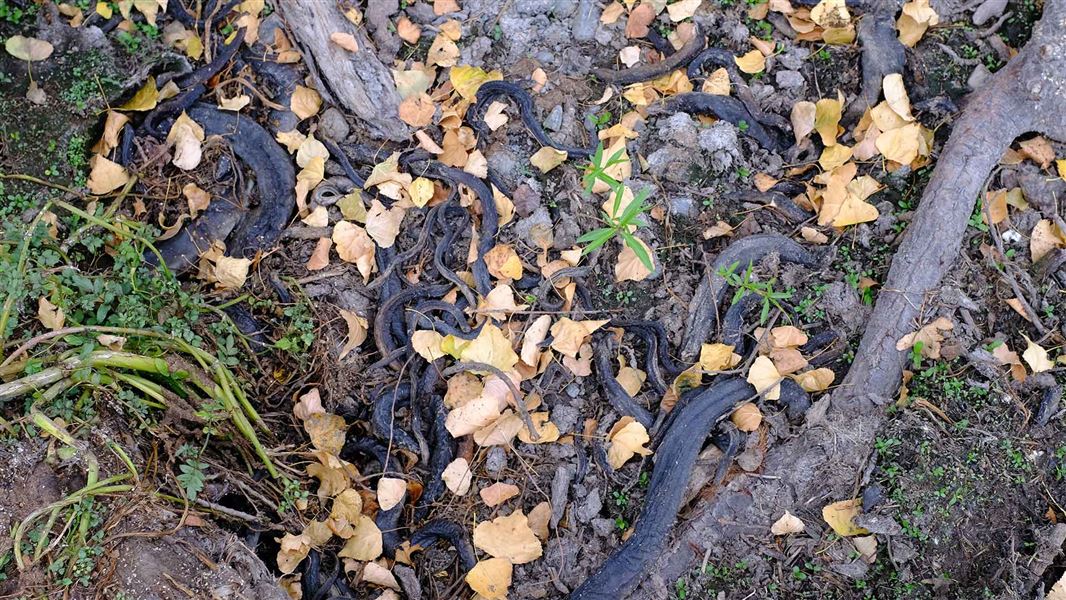Archived content: This media release was accurate on the date of publication.
Date: 02 March 2020
As river levels drop and the Hawke’s Bay summer dry conditions continues, residents near Waipawa have reported having to dispose of five wheelbarrows full of dead eels from a dried-up creek.
When investigating this report, DOC Rangers and Te Taiwhenua o Tamatea representatives found around 50 more eels dead in a nearby dried up waterway.
A mass eel-rescue was also carried out by pupils from Te Kura Kaupapa o Ngāti Kahungunu ki Heretaunga at Bridge Pa on Valentine’s Day.
“Tuna are a taonga, or a treasured species. The loss of so many eels across the region is a big blow for both tangata whenua and native freshwater biodiversity in Te Matau a Māui Hawke’s Bay,” Chris Wootton, DOC Senior Community Ranger says.
“It’s difficult to pinpoint the exact cause of why water levels have dropped so low and so quickly. People have described how it’s just like the bath plug has been pulled out and all the water has gone from these stream or river systems.”
DOC would like to work with tangata whenua and other agencies to understand the cause of the problem and prevent this from happening in the future.
“We want to understand the scale of the issue, so if anyone from the public sees eels stranded or dead in a drying waterway, please call our local office.”
The Napier DOC office can be contacted by email napier@doc.govt.nz and phone +64 6 834 3111.
Background information
Tuna / Eels
There are two main types of eel – the shortfin and the longfin. There are fewer eels today because of the loss of wetlands and historical commercial fishing practice. Currently the commercial eel fishery is managed by the Ministry for Primary Industries under the Quota Management System.
Eels migrate up streams as elvers to find suitable adult habitat. After many years (15-30 years for shortfins, 25 years for longfins, and sometimes up to 80 years) they migrate to the Pacific Ocean to breed and die. Eels are secretive, mainly nocturnal and prefer habitats with plenty of cover.
The ancestors of modern New Zealand eels (like Anguilla dieffenbachii) had been swimming up and down New Zealand waterways since at least the early Miocene (23 million years ago). The longfin eel is one of the largest eels in the world and it is found only in the rivers and lakes of New Zealand. Longfin eels are considered At risk, declining.
Importance / Te noho taonga mai
Tuna are very important for tangata whenua and that is re-iterated through our literature. Many marae around the motu are adorned with carvings of tuna alongside their tupuna. They were heavily relied upon by our tupuna as a source of kai and important events were often scheduled around the harvesting of tuna. They were kaitiaki of our streams, rivers and lakes, they were a vehicle for knowledge transmission and they were used as environmental indicators.
He tino taonga te tuna ki te tangata whenua. Inā noa atu ngā kōrero mōna i ā tātou kōrero tuhituhi. He maha hoki ngā marae hōrapa nei i te motu e whakarākai ana i ngā whakairo ki te tuna i te taha tonu o ō rātou tūpuna. I whakawhirinaki atu ō tātou tūpuna ki te tuna hei kai, ka mutu, he mea āta whakarite ngā hui rangatira kia tū i te wā e hopungia ai te tuna. He kaitiaki i ngā manga, i ngā awa me ngā roto. He pātaka kōrero, he kaitohu hoki rātou i te wairua o te taiao.
Contact
For media enquiries contact:
Email: media@doc.govt.nz
